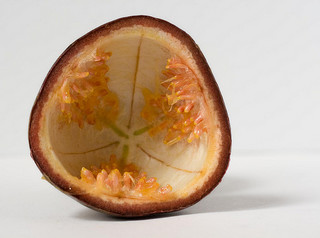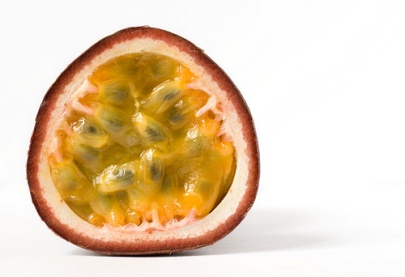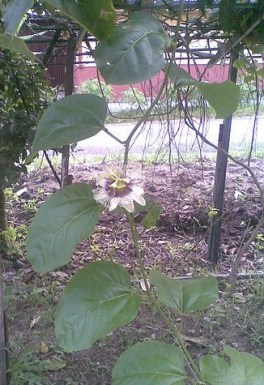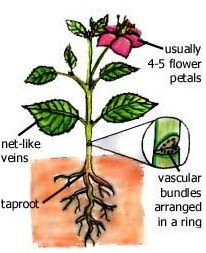BIO 203
Classification
Domain: Eukaryote
Passiflora edulis is multicellular, like all organisms
in this domain. They also contain membrane bound organelles and
genetic material inside the nucleus.

Kingdom: Plantae
This kingdom consists of all the plants. Plants have unique characteristics, such as being sessile (non-moving) and having the ability to undergo a process called photosynthesis, which allows them to generate their own source of food (also referred to as being autotrophic).
Subkingdom: Tracheobionta
This subkingdom characterizes the passion fruit as being vascular, and having a dominant diploid (2n) sporophyte phase. Refer to the Reproduction page for more information on this.
Superdivision: Spermatophyta
Plants that produce seeds are part of this superdivision, as is Passiflora edulis.
Division: Magnoliophyta
This division consists of the flowering plants. Another term used to describe these plants is 'angiosperms,' which means having a covered seed. In the case of the passion fruit, the fruit itself is the covering of the seed.
This class includes all the dicotyledons, also known as the dicots. General characteristics of the dicots include having two seeds in the leaves (cotyledons) with net-like veins and presence of cambium tissue in the stems. Another flower of this class is the Madagascar Periwinkle, which you can see here!
Subclass: Dilleniidae
Plants in this subclass are syncarpous, meaning the carpels (where the seeds develop) are united within the ovary of the fruit. They are also polypetalous, indicating that the petals are not fused, and are distinct from one another.
Order: Violales
This order has a unilocular (having a single compartment) ovary and mostly parietal placentation, which means the seeds are not attached to the center of the fruit, but rather the fruit wall (can be seen in the photos below)


Family: Passifloraceae
Passifloraceae is the flowering passion flower family. Members of this family are often thrive in tropical regions, like Passiflora edulis. Another member of this family is the
Passiflora incarnata, which can be seen
here.
Another member of this family is the
Passiflora incarnata, which can be seen
here.Genus: Passiflora L.
Many of the plants in this genus are shrubs and herbs, mostly climbers with auxillary tendrils, which are specialized leaves. The passion fruit fits this genus due to its nature of growing on vines.
Species: Passiflora edulis
And finally, to the full species name, Passiflora edulis, the
scientific name for the passion fruit!

Below you can see where P. edulis fits into the lineage of the Kingdom, Plantae. From left to right, categories are as follows: Kingdom-->Superdivision-->Division-->Family-->Genus (not all divisions that make up P. edulis are shown).

This phylogenetic tree was made by me after gathering information about the relatives of P. edulis. At the genus level, it shows that P. edulis is closely related to the species P. incarnata. This is the result of having very similar biological composition. However, one difference that differentiates the two species from each other is their anxiolytic activity (University Institute of Pharmaceutical Sciences Case Study).
Now that we've covered the classification of this fruit, let's take a look at its habitat and adaptation strategies!
Home
